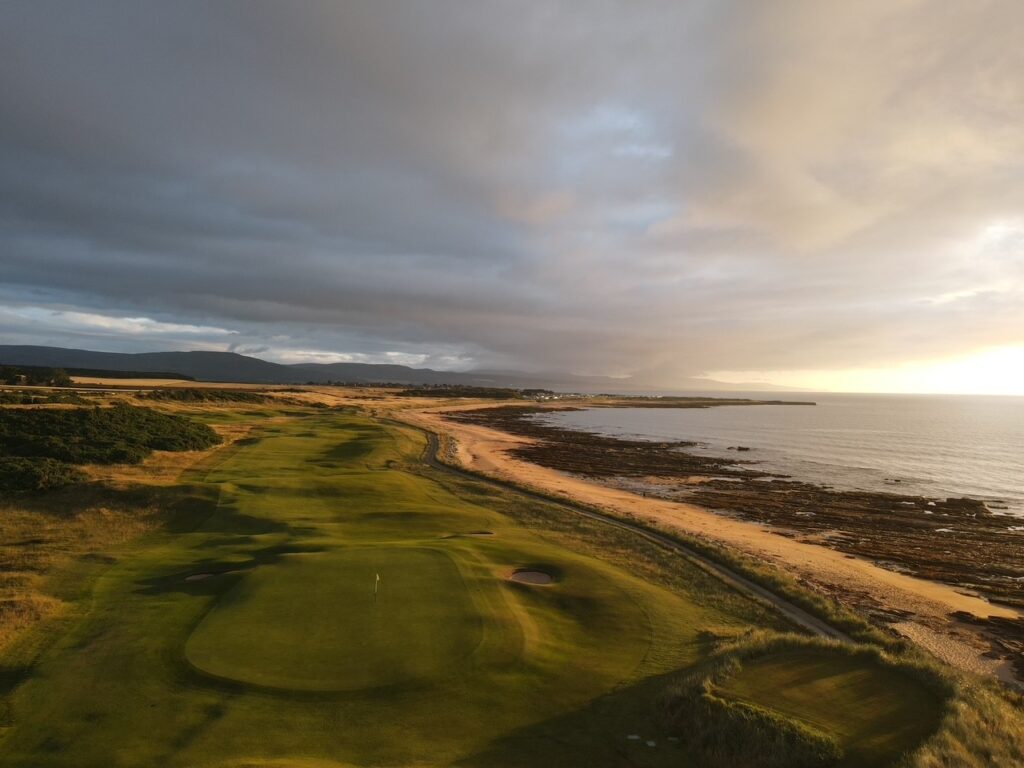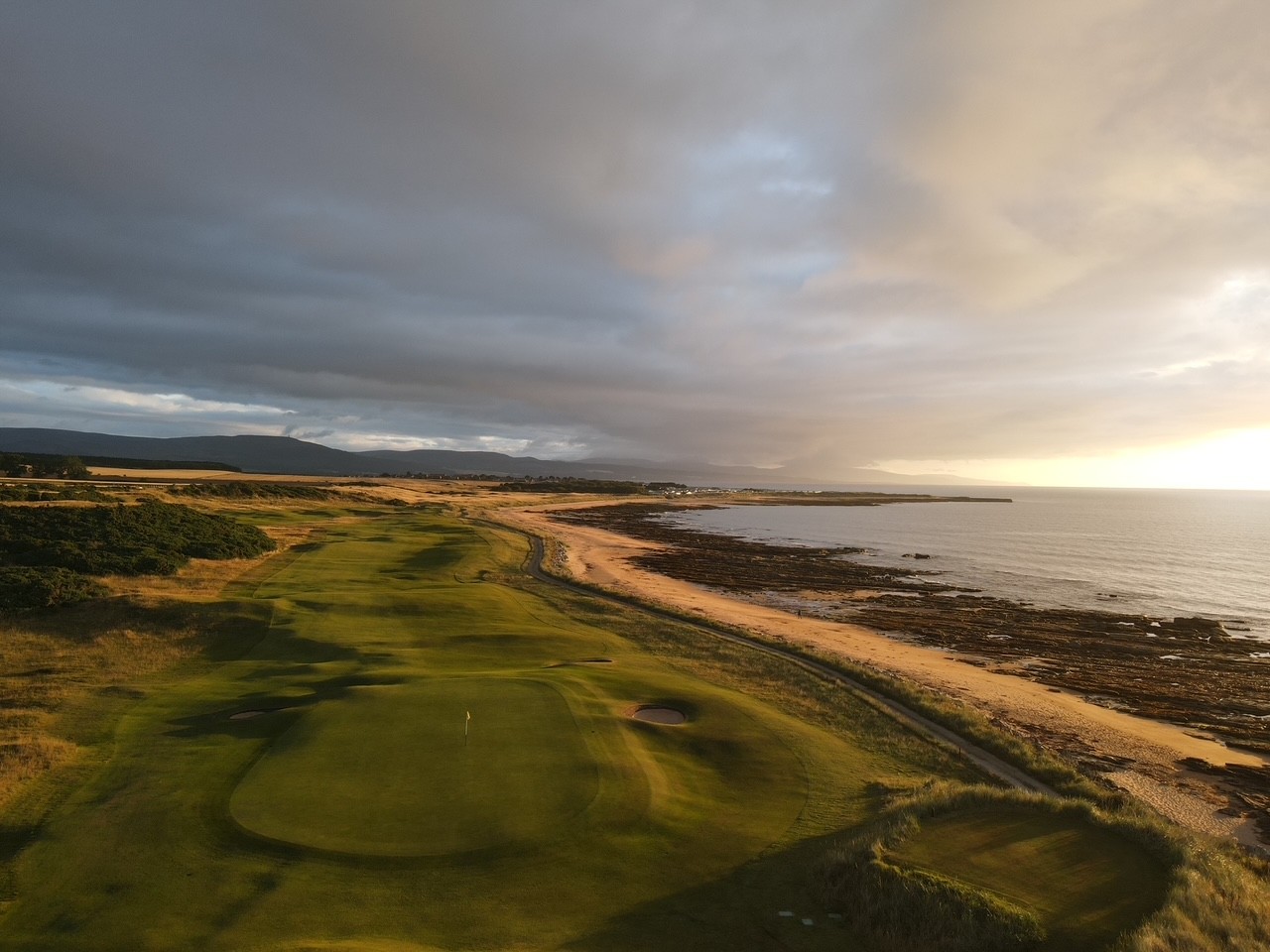One of the world’s most famous golfing links is taking steps designed to track changes in the coastal landscape.
Royal Dornoch has commissioned global risk management specialist JBA Consulting to create a coastal change adaptation plan.
The Highland club is already looking to the future with a new £13.9 million clubhouse nearing completion and ambitious plans unveiled recently to enhance the Struie Course and create a third course on neighbouring land.
“We are seeking to future proof the Championship Course by building up data which will monitor any changes along the shoreline in terms of the beach and dunes,” explained general manager Neil Hampton.
“In 2023 Storm Babet wiped out a chunk of the Dornoch Firth coastline and severely impacted some links courses further south.
“Thankfully our Championship Course wasn’t affected.
“It is set back from the sea and protected by dunes.
“But the fallout from the storm has encouraged us to establish proper monitoring and scenario planning that might prove beneficial in years to come.
“We had discussions with long-time contact Dr Ali Rennie of NatureScot, who suggested we should be modelling what might happen 10, 15, 20 years into the future.
“With JBA Consulting on board, we are seeking to be proactive rather than reactive, ensuring current and future generations have access to reliable and regularly updated data documented to track the constantly changing coastline.”
In recent years, Royal Dornoch greenkeeping staff have embraced a pioneering “Green Shores” coastal defence project, teaming-up with St Andrews University, NatureScot and Dornoch Academy.
“We are already encouraging natural flood defences to protect the 10th hole on the Struie Course,” explained Neil.
“This has included the installation of chestnut fencing, biodegradable coir rolls and repopulating the saltmarsh to create wave breaks.

“In the past, rock armour protection was introduced near the 9th tee on the Championship Course and plans to introduce a new tee for the par three 13th were put on hold by the impact of Storm Babet when a piece of land which had been earmarked disappeared.
“On the other hand, the beach which was near the area occupied by the caravan site 50 years ago is now 200 yards away. The coastline here is constantly evolving.
“Following a tender process JBA Consulting will be providing us with a coastal change adaptation plan over the next few months.
“Like our vision for the new clubhouse and enhancing the golf offering here for members and visitors, this is part of the club’s legacy planning.
“Going forward, drone technology will be used twice a year to chart any changes along the coastline.
“It will be constantly updated, allowing any future decisions to be made based on a reliable data bank.”
Doug Pender, technical director for Marine and Coastal Management with JBA Consulting, said: “Sustainable development of the golf course requires embracing uncertainty, acknowledgement that it is ever changing and being able to respond in an agile manner.
“The initial focus of the project is to provide a strong evidence base of how the combined coastal and golf course system is changing and may respond to existing and future pressures from coastal flooding, storm impacts and sea level rise driven erosion.
“This evidence base will be used to develop a collaborative adaptation plan for the club, investigating opportunities for continual monitoring, integrated development, and identifying clear decision points.
“This plan will build on the existing sustainable management approaches of the club.”







